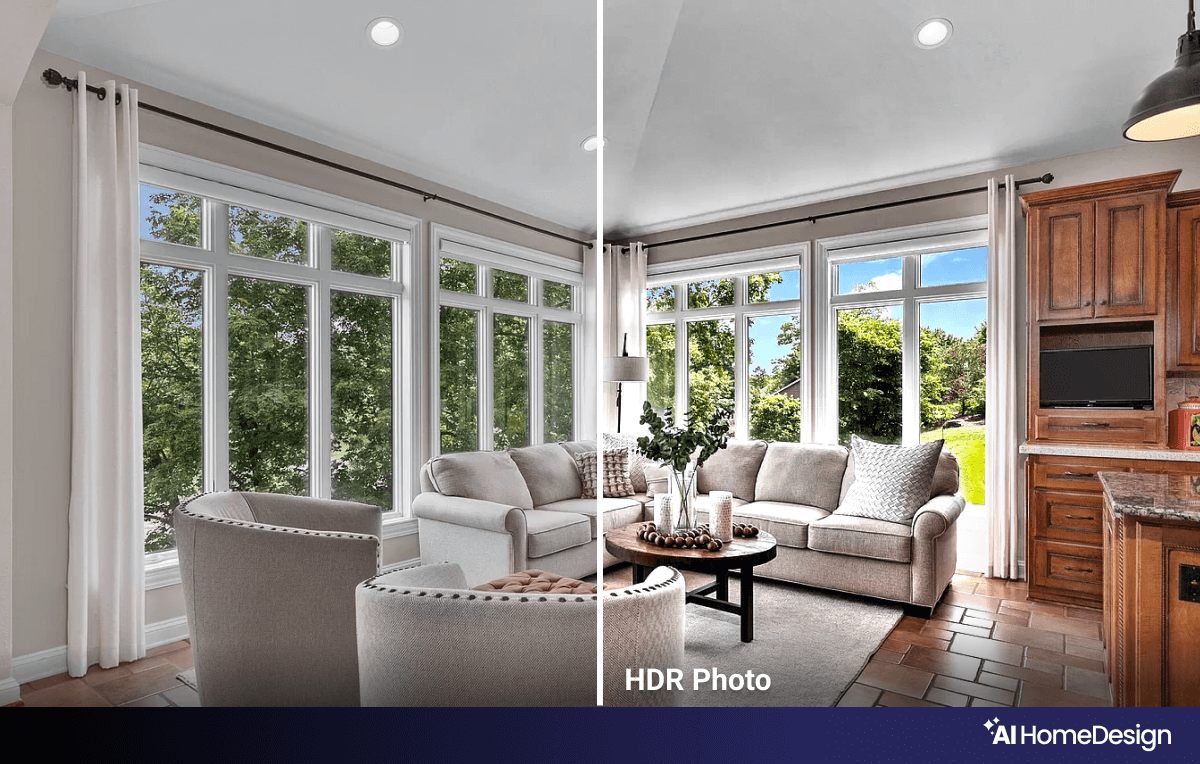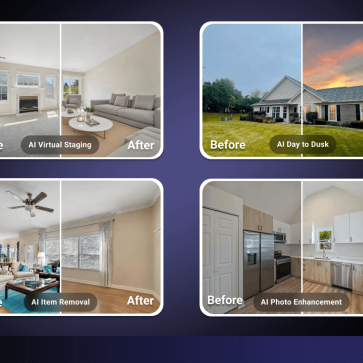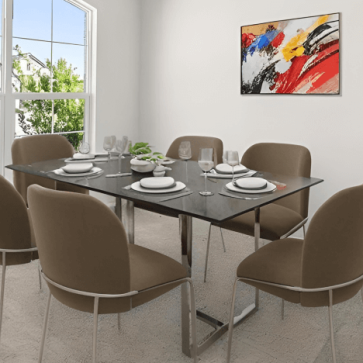A Sacred Technique in Real Estate Photography
Showcasing a property at its best is what every real estate photographer seeks and many of them have achieved this through High Dynamic Range (HDR) photography. It is a highly valued technique among real estate photographers as It enables them to record more nuanced details within the shadowy areas that would otherwise appear as solid black or featureless, It also allows them to depict more nuanced details and information within the bright, highlighted areas that may have otherwise appeared overly exposed or washed out with white. In this blog, we will provide a step-by-step guide to using HDR in real estate photography.
What is HDR in Real Estate Photography?
HDR photography involves shooting several photos of the same space at different exposure levels that range from underexposed to overexposed. The images are later merged to create a single photograph that has a broader dynamic range of light and detail.
Apart from enabling photographers to accurately replicate real-life color and contrast in their photos, this technique improves the depth and richness of the photo, allowing them to capture delicate details in the brightest and darkest parts of the scene (even in shadows). Then, by balancing exposure levels, the photographer ensures that the final image presents the full spectrum of light, offering a more accurate and vivid depiction of the given space.
In other words, the higher the dynamic range your camera has, the closer the photo will compare to what an eye can see. Now let’s see how it’s done.
Tips for Capturing HDR Photos in Real Estate Photography
Use a tripod
To capture multiple photos of the same space you need to fix the camera on a tripod. Otherwise, you’d have to stay motionless in the same place and take the photos manually! This is doable, but your hand will most likely shake a little while adjusting the exposure settings resulting in poor alignment of lines and shades in the final photo.
Set your camera on auto-bracketing mode
Exposure level in photography refers to the level of brightness and darkness in the photo. You can set your camera to take overly bright or dark photos.
When you put a camera on auto-bracketing mode, it will automatically change the exposure level every time it takes a new photo. If the camera doesn’t have this feature, you’d have to adjust the exposure level manually.
Employ the focus stacking technique
Another technique that helps with taking great HDR images is focus stacking. Just as you can adjust your camera to shoot with different levels of exposure, you can adjust it to have various focal points. When capturing ten photos of the same scene, each focusing on a different point, merging them will result in a final image with ten focal points!
Use a remote trigger
Most modern cameras have built-in timers that enable the photographer to choose the time interval between each shot. In case your camera doesn’t have this feature, try using a remote trigger to minimize the risk of camera shake or movement between the shots.
Shoot in RAW format
When practicing HDR in real estate photography, it’s best if you shoot in a RAW format as this is the only format that allows your camera’s sensor to directly process the files. Besides, RAW images contain more information compared to other formats.
Use the right software to merge the photos
There are a couple of well-known photo editing software you can use for merging the photos. Adobe Photoshop, Luminar Neo, and Adobe Lightroom are among the most practical ones. If you are using Adobe Lightroom, you can use this tutorial to learn how to merge the photos.
Maintain a natural look
Using HDR in real estate photography requires a natural look. Over-processing an image and a superficial look will only deter buyers. HDR aims to present the most real looking image of a space. You’ve got a few good options for editing photos, like Photoshop, Luminar Neo, or Lightroom. They’re pretty easy to use. But for a really professional look, you might want to chat with a pro, whether it’s a professional photographer in Melbourne, a digital interior designer Madrid, or an editor in New York. They’ve got the skills and the artistic eye to nail that HDR look perfectly.

Keep a balanced tone
To maintain that natural look, you can use a technique called tone mapping. Simply put, tone mapping is a processing technique that converts one set of colors and tones into a different set. Using this technique, you can adjust the brightness and contrast in your HDR images so that they look realistic.
Don’t overlook small details
When editing your HDR images, you might easily lose sight of subtle imperfections. There might be some noise in one corner, or one spot might be too dark or too bright! Paying close attention to such details and dealing with them will ensure a perfect final result that will nicely showcase the place.
In conclusion
Using HDR in real estate photography will give you a competitive edge among real estate photographers. True; it might be a time-consuming and delicate practice, but it will enhance the quality of your projects which means you’ll be among the top choices of real estate agents.





